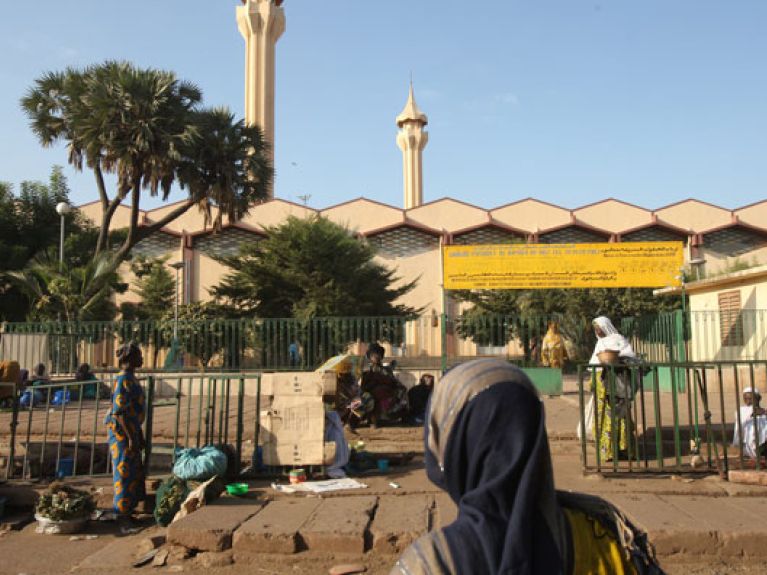Treasure trove of Bamako
Mali is home to invaluable manuscripts that are being restored as part of a German project.

Inside the Bamako manuscript archive, which was modernised in 2013, lies what is probably the most important collection of written testimony to the history of West Africa. In some 2,400 heavy metal crates are a total of 285,000 centuries-old manuscripts from Timbuktu and its surroundings. We have Abdel Kader Haïdara to thank for the fact that the invaluable manuscripts were saved from their pending destruction at the hands of radical Islamic rebels during the political unrest in March 2012 in northern Mail. He is Director of the Mamma Haïdara Memorial Library, one of Timbuktu’s largest libraries, and Chairman of SAVAMA-DCI, an NGO dedicated to preserving the heritage of Timbuktu’s manuscripts. Together with countless volunteers he managed to transport the manuscripts to the capital, Bamako, which is over 700 kilometres away. It took eight long months to secretly move the manuscripts – by donkey, private car, and truck. “The project was very, very difficult and above all incredibly dangerous,” recollects Haïdara. In October 2014 he was honoured for his unparalleled commitment to the manuscripts’ cause – with the German African Prize.
“An inconceivable cultural treasure trove that can best be compared with the holdings of all libraries in Germany,” enthuses Eva Brozowsky. A restorer and paper specialist, she is part of the team at the University of Hamburg’s “Centre for the Study of Manuscript Cultures” (CSMC) which has for almost three years now been busy restoring the manuscripts as part of the “Safeguarding the Manuscripts from Timbuktu” project. Since 2013 the project team has been helping preserve and research the Timbuktu manuscripts, which are included on the UNESCO World Cultural Heritage list. After establishing a manuscript archive in Bamako and fitting it out with dehumidifiers, the German team is currently at work on the conservation, cataloguing and digitalisation of the manuscripts – to ensure they can be made accessible to Malian and international researchers in the long term. The project is financed to the tune of several hundred thousand euros by the Federal Foreign Office and the Gerda Henkel Foundation.
Eva Brozowsky and Dmitry Bondarev, the project leader, regularly travel to Bamako, assess the progress of the restoration work, and train their Malian colleagues in various conservation techniques, such as cleaning the surfaces of the paper and leather portfolios, repairing tears and cracks, removing grime and preserving the manuscripts in acid-free cartons.
“These manuscripts are a veritable treasure trove if we wish to be able to better understand the past,” comments Bondarev. They include commentaries on the Koran, treatises on Arab linguistics, law, rhetoric, astronomy and medicine, as well as all manner of commercial, political and historical documents and personal diaries. Moreover, they provide important historical evidence of how paper was made and traded. “The experts all agree that reading and publishing these manuscripts could lead to parts of African history having to be rewritten,” Bondarev continues. An interpretation of the outlook of Islamic groups in the north of Mali and the more recent history of Islam could, for example, benefit from a study of these manuscripts. ▪

